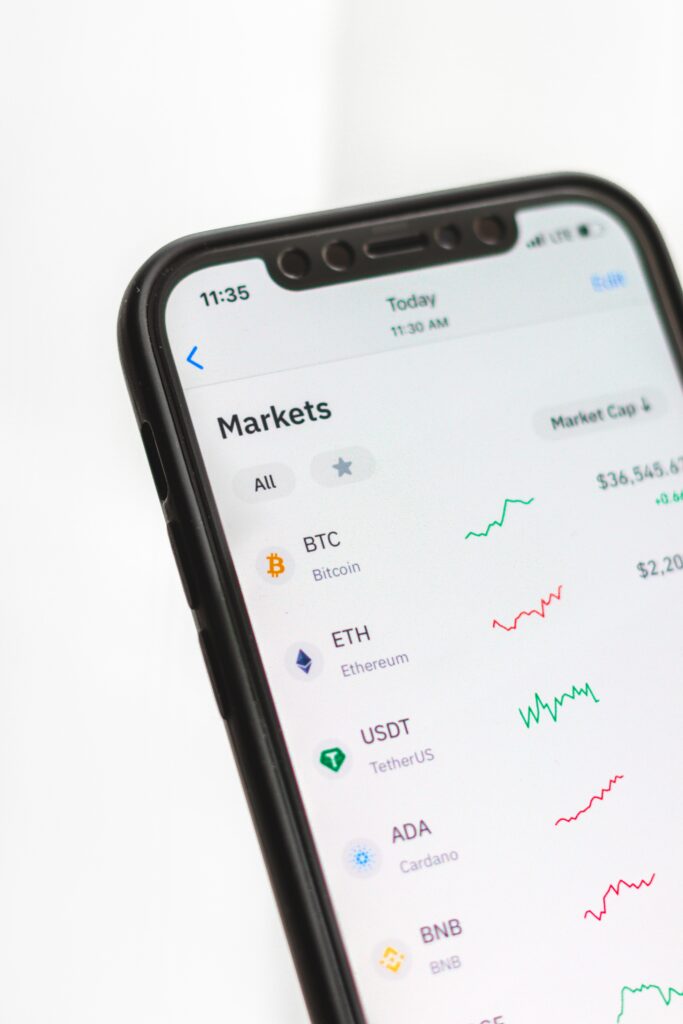If you’re serious about keeping your cryptocurrencies safe, then it’s time to consider the benefits of hardware wallets for long-term storage. In this article, we’ll explore the advantages of using these physical devices to safeguard your digital assets from potential threats. From protecting against hackers to providing offline security, hardware wallets offer a reliable solution for those looking to store their cryptocurrencies for an extended period. So, let’s dive into the world of cold storage and discover why hardware wallets are a must-have for any long-term crypto investor.

The Importance of Cold Storage
In the world of cryptocurrency, the importance of long-term storage solutions cannot be overstated. With the rising popularity and value of digital assets, it is crucial to have a reliable and secure method of storing your cryptocurrencies for extended periods of time. This is where cold storage comes into play.
The Need for Long-Term Storage Solutions
When it comes to cryptocurrencies, long-term storage is a must-have. Unlike traditional currencies, cryptocurrencies are not physical objects that can be stored in a wallet or a bank. They exist solely in digital form, making them vulnerable to various risks such as hacking, theft, or loss. In order to protect your valuable assets, it is essential to have a storage solution that minimizes these risks and ensures the safety of your cryptocurrencies for years to come.
Understanding Hardware Wallets
One popular option for long-term storage is the use of hardware wallets. These are physical devices specifically designed to securely store your cryptocurrencies offline. Hardware wallets provide an added layer of security by keeping your private keys, which are needed to access and transfer your funds, offline and away from potential threats. This makes hardware wallets significantly more difficult for hackers to compromise compared to online wallets or exchanges.
Benefits of Hardware Wallets
There are several benefits to using hardware wallets for long-term storage. Firstly, they provide the highest level of security for your cryptocurrencies. By keeping your private keys completely offline, hardware wallets eliminate the risk of online hacks or malware attacks. Additionally, hardware wallets are designed to be user-friendly, making them accessible to both experienced and novice cryptocurrency users. They often come with intuitive interfaces and clear instructions, making the process of managing and accessing your cryptocurrencies a breeze.
Considerations for Long-Term Storage
While hardware wallets offer excellent security for long-term storage, there are still important considerations to keep in mind to ensure the safety and accessibility of your cryptocurrencies.
Protecting Against Physical Damage
One important consideration is protecting your hardware wallet against physical damage. Since hardware wallets are physical devices, they are susceptible to accidents such as drops, spills, or even theft. To mitigate these risks, it is crucial to keep your hardware wallet in a secure location, such as a safe or a lockbox, where it is protected from physical damage or theft.
Safekeeping Against Theft or Loss
Another consideration is the safekeeping of your hardware wallet to prevent theft or loss. While hardware wallets are designed to be secure, they are still susceptible to being physically stolen or misplaced. To minimize these risks, it is important to keep your hardware wallet in a location that is both secure and easily accessible to you. Additionally, creating a backup of your wallet’s recovery phrase or seed is essential. This recovery phrase is used to restore your wallet in case of loss or damage to the physical device.
Ensuring Software Compatibility in the Future
As technology evolves, it is crucial to ensure that your hardware wallet remains compatible with the latest software updates and crypto protocols. Developers often release firmware updates for hardware wallets to address security vulnerabilities or add new features. By regularly updating your hardware wallet’s firmware, you can ensure that it remains secure and compatible with the latest industry standards.
Choosing the Right Hardware Wallet
Choosing the right hardware wallet is a critical step in ensuring the long-term storage of your cryptocurrencies. Here are some key factors to consider when making a decision:
Researching Different Hardware Wallet Options
Before purchasing a hardware wallet, it is important to research and compare different options available in the market. Consider factors such as the wallet’s reputation, user reviews, and the range of cryptocurrencies supported. It’s also important to check if the hardware wallet has been audited for security by third-party organizations.
Considering Security Features
Security should be a top priority when selecting a hardware wallet. Look for wallets that offer features such as two-factor authentication, PIN protection, and passphrase support. These features add an extra layer of security and help protect your cryptocurrencies from unauthorized access.
User-Friendliness and Accessibility
User-friendliness is another important factor to consider. Look for hardware wallets that have intuitive interfaces and clear instructions. The setup and management of your wallet should be easy and straightforward, even if you’re new to cryptocurrencies. Additionally, consider the availability of customer support or online resources that can assist you in case you encounter any issues or have questions.
Setting Up a Hardware Wallet for Long-Term Storage
Once you have chosen the right hardware wallet, it’s time to set it up for long-term storage. Follow these steps to ensure a secure setup:
Creating a Secure Environment
Before setting up your hardware wallet, it is important to create a secure environment. Make sure you are using a trusted and secure internet connection and that you are in a private location free from prying eyes. This helps minimize the risk of your private keys being intercepted or compromised during the setup process.
Generating and Backing Up the Recovery Phrase
During the setup process, your hardware wallet will generate a recovery phrase or seed. This is a string of words that serves as a backup in case your hardware wallet is lost or damaged. It is critical to write down this recovery phrase and store it in a safe place. Consider making multiple copies and storing them in separate secure locations to protect against loss or theft.
Updating and Managing Firmware
After setting up your hardware wallet, it is important to keep its firmware up to date. Developers frequently release firmware updates to address security vulnerabilities or improve performance. By regularly updating your hardware wallet’s firmware, you can ensure that it remains secure and compatible with the latest developments in the cryptocurrency ecosystem.

Transferring and Storing Cryptocurrency
Once your hardware wallet is set up, you can start transferring and storing your cryptocurrencies securely. Here are some important steps to follow:
The Process of Transferring Funds to a Hardware Wallet
To transfer your funds to the hardware wallet, you will need to obtain your wallet’s receiving address. This address is unique to your wallet and acts as a destination for your cryptocurrencies. From your exchange or online wallet account, initiate a withdrawal and enter your hardware wallet’s receiving address as the destination. Ensure that you double-check the address to avoid any potential errors.
Creating Backups and Secure Storage Methods
Creating backups of your hardware wallet is vital for long-term storage. In addition to the recovery phrase mentioned earlier, some hardware wallets support the creation of encrypted backups on external storage devices. Make sure to follow the manufacturer’s instructions for creating backups and store them in separate secure locations. It is important to regularly update these backups as you make changes to your wallet or add new cryptocurrencies.
Keeping Track of Wallet Address and Transaction History
As you transfer and store your cryptocurrencies, it is important to keep track of your hardware wallet’s address and transaction history. This information is useful for accurately accounting for your holdings and for tax reporting purposes. Many hardware wallets provide software applications or online platforms that allow you to easily monitor your wallet’s activity and generate reports.
Periodic Maintenance and Security Checks
To ensure the ongoing security and functionality of your hardware wallet, regular maintenance and security checks are essential. Here are some important tasks to consider:
Regularly Updating Firmware and Software
As mentioned earlier, keeping your hardware wallet’s firmware up to date is crucial for security. Developers often release firmware updates to address vulnerabilities or introduce new features. Set a schedule to check for and install firmware updates regularly to ensure your wallet remains secure and compatible with the latest changes in the cryptocurrency landscape.
Performing Security Checks
Regularly reviewing the security settings and features of your hardware wallet is important to ensure that it continues to provide the level of protection you require. Check for any unusual or suspicious activity, review your password and PIN settings, and consider enabling two-factor authentication if available. Performing security checks regularly can help identify and address any potential vulnerabilities.
Monitoring and Controlling Access to Wallet
Keeping track of who has access to your hardware wallet is crucial for maintaining its security. Ensure that only trusted individuals have physical access to the wallet and that they understand the importance of maintaining its security. Additionally, consider using additional security features such as PIN protection or biometric authentication if supported by your hardware wallet.

Preparing for Inheritance or Passing on Crypto Assets
For individuals considering passing on their crypto assets to beneficiaries in the long-term, there are several considerations to keep in mind:
Considerations for Passing on Crypto Assets in the Long-Term
When planning for the long-term transfer of your crypto assets, consider factors such as the legal and tax implications, as well as the technical knowledge of your beneficiaries. Crypto assets can present unique challenges in terms of inheritance, and it is important to seek legal and financial advice to ensure a smooth transition of your assets to your intended beneficiaries.
Educating Beneficiaries and Providing Instructions
To ensure a seamless transition of your crypto assets, it is crucial to educate your beneficiaries about cryptocurrencies and provide them with clear instructions on how to access and manage the assets. If you have a hardware wallet, make sure your beneficiaries understand the importance of keeping the physical device secure and how to access the recovery phrase or seed.
Using Multisignature Wallets for Added Security
For added security and control over your crypto assets, consider using multisignature wallets. These wallets require multiple private keys to authorize transactions, making it more difficult for unauthorized individuals to gain access to your funds. With multisignature wallets, you can distribute the responsibility of managing your assets among trusted individuals, ensuring that no single person has complete control.
Seeking Professional Advice and Services
If you are unsure or uncomfortable with managing the long-term storage of your cryptocurrencies on your own, there are professional services available to assist you:
Consulting a Financial Advisor or Crypto Specialist
Consulting a financial advisor or cryptocurrency specialist can provide valuable insights and guidance on managing your long-term storage. These professionals can help you navigate the complexities of cryptocurrencies, address your specific concerns, and provide recommendations based on your individual needs and goals.
Utilizing Custodial Services for Added Security
Custodial services, offered by reputable cryptocurrency exchanges or specialized companies, provide an added layer of security for storing your cryptocurrencies. These services typically involve depositing your assets with a trusted third party who manages the security and storage on your behalf. While custodial services may incur fees and involve relinquishing some control over your assets, they can offer peace of mind for those who prefer a hands-off approach.
Staying Up-to-Date with Regulatory Changes
The regulatory landscape surrounding cryptocurrencies is constantly evolving. It is important to stay informed about any changes in regulations that may affect the long-term storage and management of your assets. By staying up-to-date, you can ensure that your storage and security practices remain compliant and that you are aware of any potential legal or tax implications related to your crypto assets.
Addressing Common Concerns and Misconceptions
As with any new technology, there may be concerns and misconceptions surrounding cold storage and hardware wallets. It is important to address these concerns and ensure accurate information is communicated:
Concerns About Hardware Failure and Redundancy
One common concern is the possibility of hardware failure, which could potentially result in the loss of your cryptocurrencies. While hardware wallets are designed to be robust and durable, it is always prudent to have multiple backups of your recovery phrase or seed. By creating and securely storing multiple backups, you can mitigate the risk of hardware failure and ensure that you have access to your cryptocurrencies even in the event of a hardware malfunction.
Misconceptions About Cold Storage and Accessibility
Some individuals may have misconceptions about cold storage and believe that it sacrifices accessibility for security. While it is true that cold storage methods such as hardware wallets require additional steps compared to online wallets or exchanges, they offer a significantly higher level of security. With proper planning and organization, accessing and managing your cryptocurrencies with a hardware wallet can be both secure and convenient.
Balancing Security and Convenience
Finding the right balance between security and convenience is a personal decision. While hardware wallets offer the highest level of security, they may not be suitable for everyone. It is important to consider your own needs, preferences, and level of comfort when choosing a long-term storage solution. If convenience is a top priority, online wallets or custodial services may be more suitable, although they may introduce additional risks.
Conclusion
Long-term storage solutions are crucial for safeguarding your cryptocurrencies and ensuring their accessibility for years to come. Hardware wallets offer an excellent option for secure and user-friendly storage, providing the highest level of protection for your valuable assets. By considering the various factors discussed in this article, such as choosing the right hardware wallet and following best practices for setup and maintenance, you can confidently store and manage your cryptocurrencies with peace of mind. Remember, investing in hardware wallets and taking the necessary precautions is an investment towards the long-term security and growth of your crypto assets.

